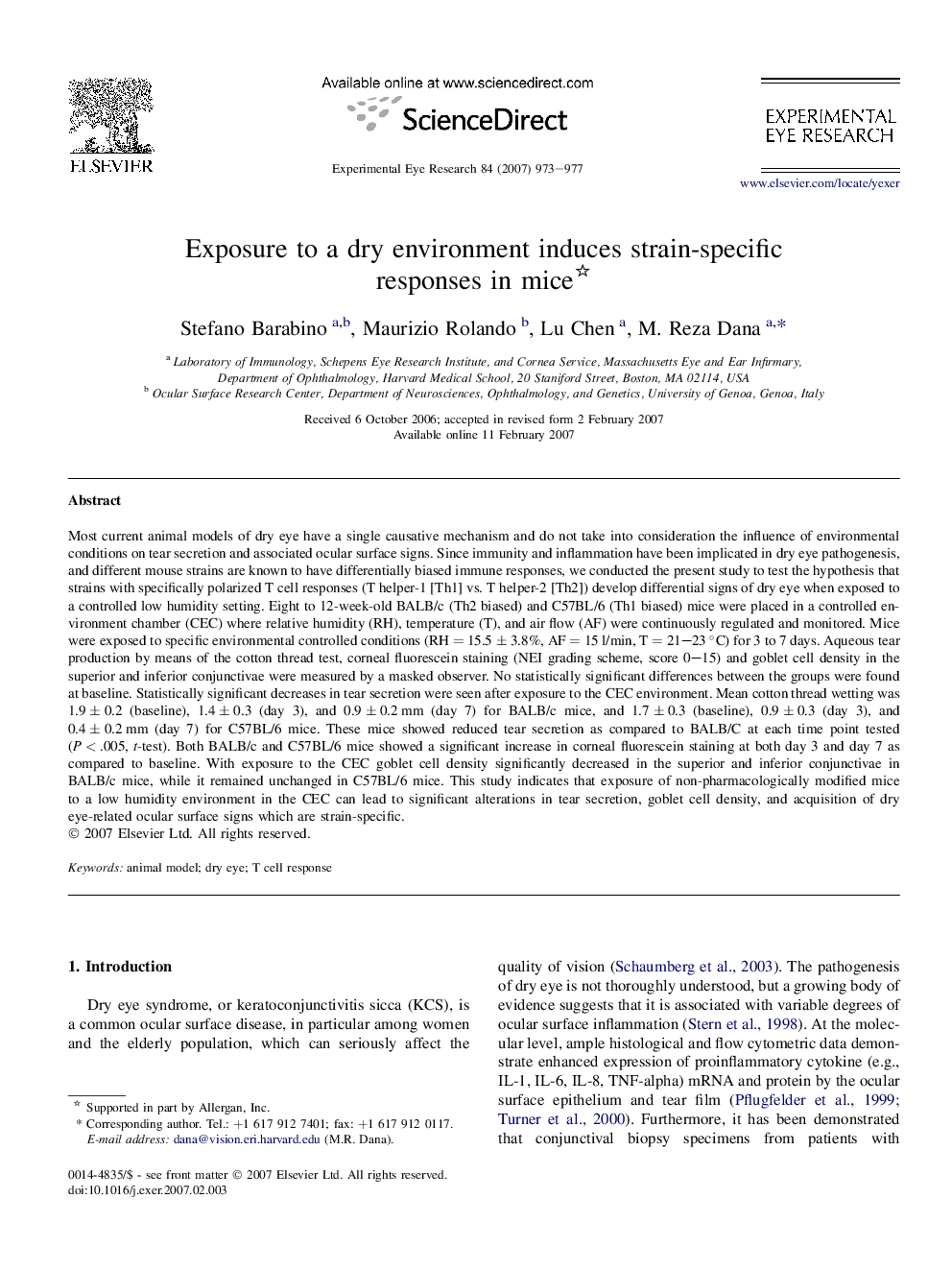| کد مقاله | کد نشریه | سال انتشار | مقاله انگلیسی | نسخه تمام متن |
|---|---|---|---|---|
| 4012916 | 1261219 | 2007 | 5 صفحه PDF | دانلود رایگان |

Most current animal models of dry eye have a single causative mechanism and do not take into consideration the influence of environmental conditions on tear secretion and associated ocular surface signs. Since immunity and inflammation have been implicated in dry eye pathogenesis, and different mouse strains are known to have differentially biased immune responses, we conducted the present study to test the hypothesis that strains with specifically polarized T cell responses (T helper-1 [Th1] vs. T helper-2 [Th2]) develop differential signs of dry eye when exposed to a controlled low humidity setting. Eight to 12-week-old BALB/c (Th2 biased) and C57BL/6 (Th1 biased) mice were placed in a controlled environment chamber (CEC) where relative humidity (RH), temperature (T), and air flow (AF) were continuously regulated and monitored. Mice were exposed to specific environmental controlled conditions (RH = 15.5 ± 3.8%, AF = 15 l/min, T = 21–23 °C) for 3 to 7 days. Aqueous tear production by means of the cotton thread test, corneal fluorescein staining (NEI grading scheme, score 0–15) and goblet cell density in the superior and inferior conjunctivae were measured by a masked observer. No statistically significant differences between the groups were found at baseline. Statistically significant decreases in tear secretion were seen after exposure to the CEC environment. Mean cotton thread wetting was 1.9 ± 0.2 (baseline), 1.4 ± 0.3 (day 3), and 0.9 ± 0.2 mm (day 7) for BALB/c mice, and 1.7 ± 0.3 (baseline), 0.9 ± 0.3 (day 3), and 0.4 ± 0.2 mm (day 7) for C57BL/6 mice. These mice showed reduced tear secretion as compared to BALB/C at each time point tested (P < .005, t-test). Both BALB/c and C57BL/6 mice showed a significant increase in corneal fluorescein staining at both day 3 and day 7 as compared to baseline. With exposure to the CEC goblet cell density significantly decreased in the superior and inferior conjunctivae in BALB/c mice, while it remained unchanged in C57BL/6 mice. This study indicates that exposure of non-pharmacologically modified mice to a low humidity environment in the CEC can lead to significant alterations in tear secretion, goblet cell density, and acquisition of dry eye-related ocular surface signs which are strain-specific.
Journal: Experimental Eye Research - Volume 84, Issue 5, May 2007, Pages 973–977